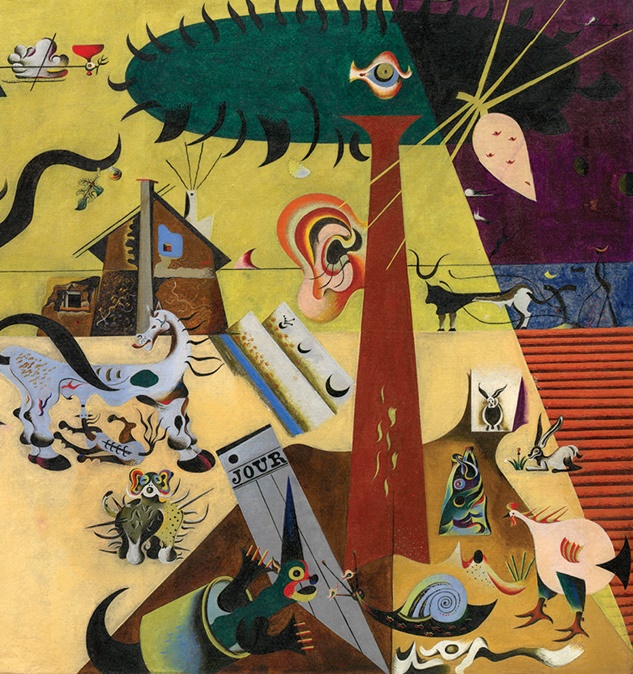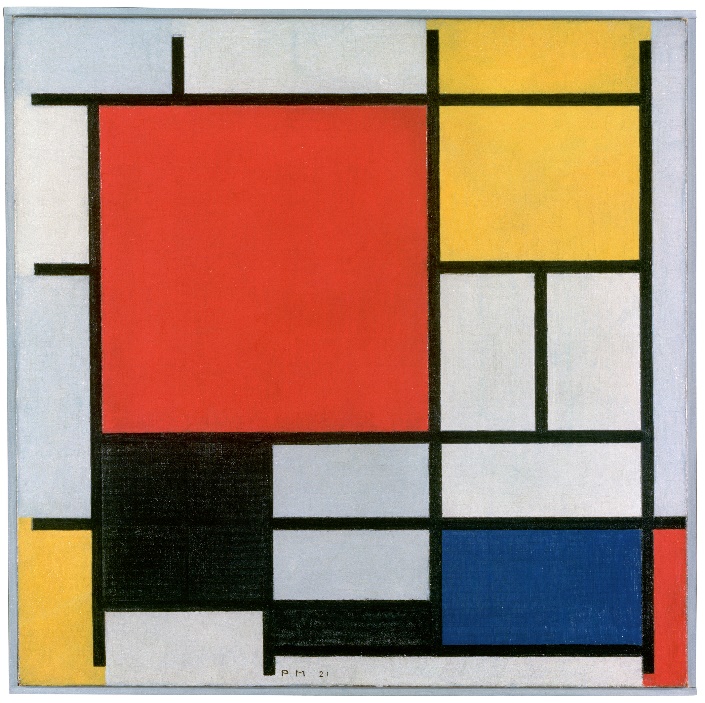Art styles portray different profound philosophies and manners of different times. Understanding the art styles helps people to analyze the artist’s vision, beauty, and feelings expressed through the various colors and subjects of the painting. Although Surrealism and Neoplasticism evolved at the beginning of the 20th century, they have many differences in their abstraction styles. Surrealism depicts unconscious symbolic images with the bright colors developed shortly after World War 1, while Neoplasticism describes human experience using clear patterns and colors.
Different painters of Surrealism apply different artistic techniques, but all have the same ideology. Their main goal is to explore the connection between imagination and reality and identify the mind’s influence on abstract ideas and dreams. One such Catalan artist is Juan Miro, who has a “diverse collection of works, estimated to include some 2,000 oil paintings, 500 sculptures, 400 ceramic objects, 5,000 drawings, and collages, and 250 illustrated books “(Breedlove, 2019, p.2344). His earliest surrealistic work is called The Tilled Field of 1923-1924, depicting his family’s farm in Catalonia (figure 1). The place where Miro grew up inspires him to such an extent that he depicts every creature and plant on this farm. Such juxtaposition of nature and human life can be attributed to the writer’s attachment to his perfect homeland, where he does not tolerate political problems. Thus, Miro reflects his rejection of the Spanish dictatorship in his painting.
The Tilled Field is an artwork with cartoon-looking animals, puzzling iconography, and mysterious forms as surrealistic features. Miro depicts precise subjects by organizing distinct geometric shapes in the painting. Yellow shades fill the most subdued trapezoid panels, pointing to the sky and earth. The name of the painting occurs from the six rippled furrows at the bottom left, while the triangle on the top right of the picture represents the night. Even the subjects depicted in the picture differ from the author’s imagination since the tree possesses an all-seeing eye and a human ear which is very unusual for the human mind. Miro’s house occupies the center of the picture with cracked walls, surrounded by many “multicolored creatures, including a dog, snail, horse, and foal” (Breedlove, 2019, p.2345). Therefore, Surrealism is characterized by bright colors, unusual abstract subjects, and geometric shapes.

In The Tilled Field, Juan Miro demonstrates the surrealistic ideology focusing on breaking the borders between real and imaginative worlds. Surrealistic worlds affected the culture as they tried to oppose the human’s changing nature after World War I, full of cliche and rationality (Ortolano et al., 2017). The artists work without any interruption and a chance to revise the work since they were in a trans-like state. Consequently, it spreads across Europe, Japan, and South America, giving rise to many artists describing their concerns using new visual elements. Thus, Surrealism allows people to change society by depicting the world in an imaginative and unfiltered way.
De Stijl or Neoplasticism is the art philosophy using vertical and horizontal lines, rectangular planes, and primary colors to depict concrete patterns and orders of the human world. Piet Mondrian founds Neoplasticism focused on non-objective art with fundamental structural elements to establish a universal and unique art form (Fallahzadeh & Yousof, 2019). There are six principles of Neoplasticism, excluding symmetry, curves, and diagonals. The painters use only primary colors, such as red, blue, and yellow, and noncolors, such as white, black, and grey, to avoid bright colors. Neo-plasticism influences culture by facilitating different design types and other abstract expressionism artworks.

One of the most famous artworks of Neoplasticism is Piet Mondrian’s Composition with Red, Yellow, Blue, and Black of 1919 (figure 2). It complies with all six principles of Neoplasticism as it contains plastic means in the form of rectangular planes with primary colors (Fallahzadeh & Yousof, 2019). His painting demonstrates the harmony of contrasts in all its forms. For example, the large red square at the upper right could dominate the whole picture, but the painter balances it off with the small blue square at the bottom left. Additionally, Mondrian utilizes various noncolors to create a harmony of light and dark shades. The lack of extended lines causes vagueness as the rectangles are not depicted as perfect delimited peripheral planes. Piet Mondrian does not create a rigid geometric composition since he balances contrasts and dynamic forces.
Surrealism and Neoplasticism painters share creativity and imagination but apply it differently to their works. Although surrealists portray major human concerns, they have no logic or reality behind their paintings. People struggle with interpreting them as all the artworks are unique and have deep meanings. Even the word “surrealism” describes something unusual or unexpected for human experience (Ortolano et al., 2017). Representatives of Surrealism draw their inspiration from mundane details of their childhood memory and fantasy, making an impression of dreams on people. For example, Miro pays more attention to cracks on the walls and the movements of the clouds. Therefore, these paintings are aimed to bring the artist’s imagination into reality and deliver more challenging ideas to their audiences.
In contrast, Neoplasticism artists apply the logic behind their works. This art style positions painting and sculpture as plastic arts due to artists’ flexibility and control over their works. Hence, it discovers the most critical inner dimensions of external experience, delivered through space, order, and patterns (Fallahzadeh & Yousof, 2019). Understanding the meaning of Neoplasticism does not require anything from the real world, as it contains only abstract forms and logical deductions.
One more distinguishing feature distinguishing Surrealism is its complex components. The artists never utilize just geometric shapes to convey their messages. They mostly depict figures and unanimated objects with impossible shapes in reality (Ortolano et al., 2017). In contrast, Neoplasticism utilizes the simplest of colors and depicts the simplest of ideas. Its artists believe they can diminish every figure to a pattern of horizontal and vertical lines (Fallahzadeh & Yousof, 2019). They never draw any symbols, figures, or hierarchy to achieve a pure abstraction.
To conclude, a thorough analysis of the representative works of Surrealism and Neoplasticism demonstrates how the two styles differ in their logic and level of complexity. As surrealistic artists portray the world to demolish the barriers between reality and imagination, the painters of Neoplasticism depict the balances and contrasts of the human experience. The former utilizes bright colors and extraordinary subjects, while the latter uses only primary colors, straight lines, and rectangular planes to express the artist’s emotions.
References
Breedlove, B. (2019). A fanciful juxtaposition, a reimagined farm. Emerging Infectious Diseases 25(12), 2344-2345. Web.
Fallahzadeh, A., & Yousof, G. S. (2019). Piet Mondrian, early Neo-Plastic compositions, and six principles of Neo-Plasticism. Rupkatha Journal on Interdisciplinary Studies in Humanities, 11(3), 1-18. Web.
Ortolano, S., Marwood, K., Capkova, H., Wu, C., Butler P., Carolyn, L., Ramos, I. & Mitchell, R. (2017). Surrealism: Overview. In The Routledge Encyclopedia of Modernism: Taylor and Francis. Web.